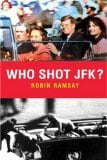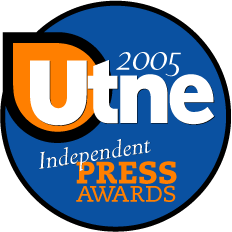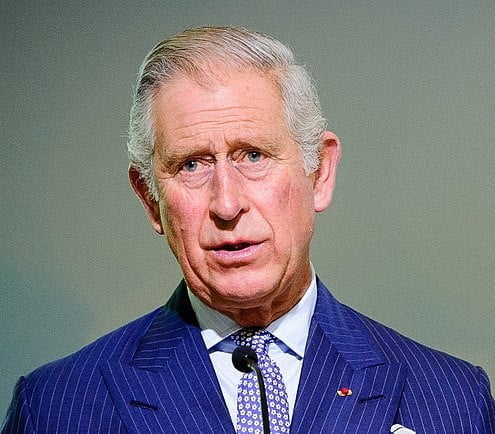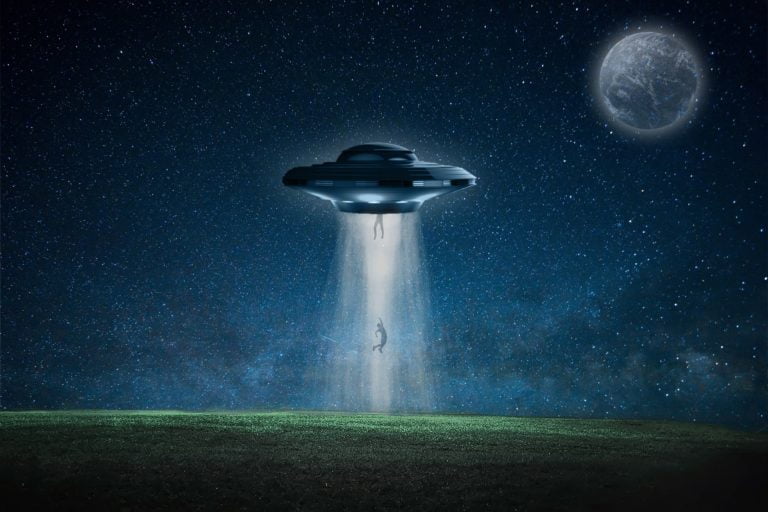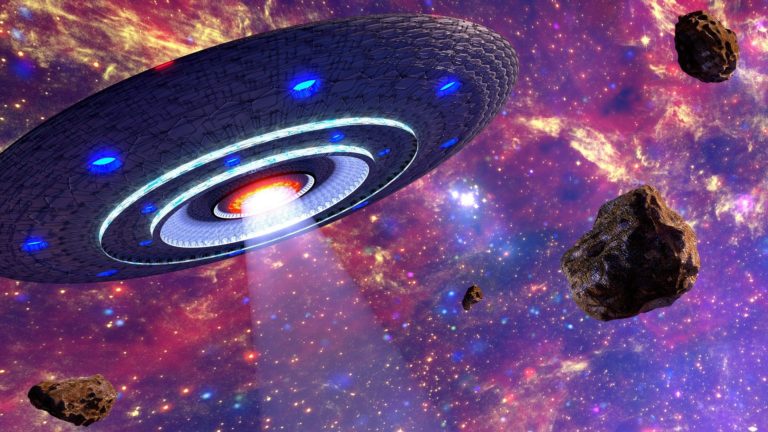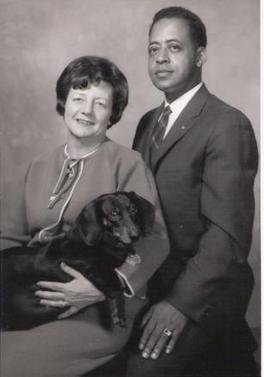This article originally appeared in The Skeptic, Volume 19, Issue 3, from 2008.
Each of the Davis family members’ recollections seemed to spark still more accounts of other apparently unconnected and as yet unreported incidents. It was as if each person had for years harbored an odd memory or two, and until I began asking questions along lines that I knew from past experience could be fruitful no one assumed that these memories were possibly significant…
BUDD HOPKINS, INTRUDERS, P. 20
Accounts of alien abductions are rarely given unprompted. In most documented cases memories of abductions were repressed, either by the abductees themselves, or more commonly by the aliens. This unfortunate situation means that testimony about such events must be elicited through prompting and suggestions put by the interviewer, most likely under hypnosis, a situation that heightens the potential for the distortion of recall.
Consequently, care needs to be taken to ensure that recall owes more to the memory traces of abductees, rather than the preconceptions and weaknesses in investigative technique of the interviewers. In particular, interviewers need to be aware of the process of suggestion and the potential creation of false memories.
Many writers on alien abduction often make confident assertions about the fact that psychological explanations cannot account for their findings, or amazingly that subjects were not leadable (e.g., David Jacobs, p. 323). This then leads them to the position that the tales they obtain from abductees must be true, since other alternative explanations are inadequate. For example, Hopkins (p. 30) writes:
Now after investigating this sort of abduction account, the researcher ultimately has to take one of three basic positions. First, he can decide that the witness is a liar, a deliberate hoaxer. Second, he can conclude that the witness is somehow deluded, that the experience did not take place but instead was some kind of psychological aberration. The third and only other option is that the witness’s account is an honest attempt to remember an actual event.
Such reasoning has to be interpreted as an “honest attempt” to understand how it is possible that alleged abductees could provide such an incredible wealth of detail about supposedly fictitious events. Herein lies some of the problem in dismissing the abduction accounts out of hand, the sheer quantity of testimony does seem to suggest that there must be some truth to what is being reported.
Setting aside outright deceit and psychological problems, it seems too far-fetched to believe that otherwise honest individuals might actually simply be making this all up in response to questions put to them by interviewers. In order to understand how this might be possible we can begin by asking the following question.
Is red heavier than yellow?
After your initial confusion, how might you go about answering this question?
You might try looking around your room to identify a red and a yellow object. Finding a thick textbook with a red cover and a slim paperback with a yellow cover, you could answer the question “Yes”, and when prompted as to “Why?” add that “The red book is heavier than the yellow book”.
Alternatively, finding no obvious clues in the immediate environment, you could draw on general knowledge for an answer. Once again, red is heavier, this time “because it is a denser colour”.
Finding and justifying an answer to this question isn’t difficult. Drawing on either contextual cues (things in our immediate environment), or general knowledge we can readily provide an answer and then offer reasoning in support of it.
The only problem is that the question is essentially meaningless. The entire exchange, with its initial question (“Is red heavier than yellow?”), response (“Yes”), request for verification (“Why?”) and justification (“The red book is heavier than the yellow book”), proceeds successfully in that questions are asked and answered in a seemingly appropriate and coherent way.
However, the fact that the interviewee was able to respond to the questions does not mean that the initial question was coherent or meaningful, nor does it mean that the interviewee has any confidence in their answers or that such answers should be viewed as “accurate”. Yet, the interviewer may well believe that the initial question was meaningful, a view reinforced by the apparently appropriate nature of the interviewee’s response. Doubts about the latter would only emerge if the justification were entirely irrelevant to the question, such as “Half-past three”, or “Belgium” (noting that with a little effort even these answers could be construed as meaningful).
The fact that interviewers may be asking questions that are essentially meaningless, but nevertheless capable of eliciting responses, is a problem that has dogged child psychology in recent decades. Adult interviewers had devised tests of children’s abilities with the assumption that a child’s understanding of a question (or set of instructions), matched that of the interviewer, thereby producing a meaningful assessment of knowledge or competency.
Unfortunately, there was often a significant divergence in understanding, a problem that for many years went unnoticed because the behaviour of children in interviews and testing situations was contextually appropriate. A few children may have burst into tears, frozen, or otherwise failed to perform, but most behaved in a manner that reassured the interviewer, or experimenter, that they had the knack of dealing with children and more importantly, that their study was producing valid data. The possibility that carefully planned out studies, possibly involving hundreds of children might be fundamentally flawed, was undoubtedly too remote for serious consideration.
The question “Is red heavier than yellow?” was originally put to children aged between 5 and 9 years of age by psychologists Hughes and Grieve (1980; UFO investigators might like to ponder the equally valid alternative “Is grey heavier than green?”). They also asked other questions, including, “Is milk bigger than water?” and “One day there were two flies were crawling up a wall. Which fly got to the top first?”. The questions were deliberately designed to be bizarre and essentially meaningless.
The study showed that despite these apparent limitations children had little difficulty in answering them. Most importantly, the study showed that children did not simply guess or randomly offer answers to the questions. Instead, drawing on contextual cues and general knowledge they offered coherent, reasoned answers.
Children’s ability to answer questions or follow instructions goes beyond the ability to make sense of the bizarre, they can even respond to questions completely devoid of any meaning, such as when non-existent words are used. This was demonstrated by Carey (1978), who placed a small puppet, a glass and a jar of water in front of young children.
The children were initially given instructions to “give the puppet more water to drink”, which they did by pouring water from the jar into the glass. They were then asked to “give the puppet less water to drink”, which they did by pouring water from the glass to the jar. They were also asked to “give the puppet tiv water to drink”, which they did by either pouring water from the glass to the jar or vice versa. The children, who used contextual cues to override the ambiguity of the spoken instructions, ignored the fact that the request had no meaning.
The situation dictated that something had to be done with the glass, the jar and the puppet. The number of possible actions was thus relatively small. Placed in a confusing situation the children acted on the basis of what they thought the question meant rather than its literal interpretation. Such behaviour goes beyond single sentence answers. It is possible to elicit complete stories (such as the witch that flew through their room last night), with the minimum of prompting.
While one might readily accept that children will respond in such a way to bizarre questions, what of adults? Surely they would not behave in such a way. A follow-up to the Hughes and Grieve (1980) study carried out in Australia by Pratt (1991) included samples of children and adults. Amazingly, the adults behaved in a way similar to that of children, initially puzzled, and then readily offering reasoned responses that showed the same underlying structure as the answers of children. You might want to try this out on your friends or colleagues. It is interesting to find that adults often tend to be even more elaborate than children in how they answer such questions, for example, sometimes treating the questions as philosophical debates. Clearly, as adults we do not lose our ability to respond to bizarre questions, if anything, we improve on this skill.
These studies offer some important messages for abduction researchers. For example, it is apparent that any question, no matter how badly phrased or incoherent it may seem, will elicit a response, one that will be reasoned and relevant. In an interview, few people will refuse to reply and the answers they give will be easily interpreted within the interviewer’s existing frame of reference.
The field of child psychology has been heavily affected by such discoveries, with researchers subsequently devising more reliable methodologies, ever watchful as to the possibility that questions might be misinterpreted and thus not tapping the knowledge or abilities they were intended for.
The findings have also had considerable impact on law enforcement procedures, where new questioning techniques for both witnesses and suspects have been developed to ensure that accurate testimony is elicited. Police officers and child psychologists shared a common ground in that both assumed that suggestibility was a characteristic present only in interviewees, ignoring their own culpability in generating the image of overly suggestible and compliant witnesses.
For example, interviewers’ sceptical of children’s abilities will typically repeat questions that have elicited a response in order to check the child’s competency. However, young children interpret such repeated questioning as indicating that their earlier answer was incorrect, or unacceptable, causing them to modify it to please the interviewer. This of course vindicates the sceptical interviewer, who now has the proof that children cannot be trusted, little realising that they caused this apparent problem.
It is important to note that subjects are not lying when they respond to meaningless questions. They are making an honest attempt to answer the question, but will show little confidence in their responses, readily modifying them in response to feedback from the interviewer. It is also important to recognise that very few interviewers will ever spot such a process.
Even when listening to recordings of their own interviews, most will fail to realise the ambiguities in their questions, possibly arguing that any flaws in question form were of little consequence as the interviewee understood the intention of question (as with many child psychologists), as evidenced by the appropriate nature of their response. Take for example David Jacobs and his interview with Lynn Miller (Secret Life, p. 314):
DJ: Why do you think he might want that?
LM: He needs babies….
DJ: When he says he wants you to have babies, can you get a sense of why he needs babies?
LM: No.
DJ: Can you get a sense of what he’s going to do with the babies?
LM: They need them for work?
DJ: For work?
LM: Yes.
DJ: You mean they’re growing babies to be workers?
LM: Yes.
DJ: How can you get a sense of that?
LM: I just get a sense of it.
Secret Life, p. 314
This type of questioning bears a strong similarity to the process observed with the earlier “bizarre” questions. Initially Lynn denies having any sense of why babies might be required, yet seconds later a coherent purpose is forthcoming, which the interviewer probably takes as validating the initial line of questioning. Just as sceptical interviewers can destroy the credibility of witnesses, overly credulous interviewers can boost apparent credibility.
As with the children described earlier, respondents are not lying when answering such questions, merely trying to make sense of the questions they are asked. After all, what could possibly be any more bizarre than asking a person a question such as “Were you abducted by aliens?” The ability to answer such a question and provide accompanying details does not tell us anything about the reality of a person’s experiences.
Both children and adults draw on contextual cues and general knowledge for answers. This undoubtedly explains why so many aspects of alien abduction stories have decidedly terrestrial origins, with many aspects of abduction tales having their origins in science fiction stories, including the now obligatory wraparound eyes found in aliens which can be traced back to Barney Hill’s viewing of an episode of The Outer Limits (see Kottmeyer, 1994).
In other words, general knowledge gives us a certain range of behaviours that could be used when describing an alien abduction scenario. How might this work? The most obvious starting point is the question “Why are they here?” Popular options might be to invade, to learn, or to communicate. Each abduction author favours one of these initial premises and elicits testimony that supports their beliefs. Regrettably this tells us more about the authors than it does about any possible alien contact.
From each of these initial premises a simple series of sub-themes becomes available. If we chose the invasion theme, then we need to explain why there aren’t Independence Day-type sightings over major cities. Obviously the invasion is more covert, perhaps the invaders fear our technology, and perhaps their numbers are small. We pick one such option, which then leads to a new set of choices in our narrative, and carry on in this fashion until we have a coherent description of an alien invasion plan.
Inventing a complete narrative in such a fashion is relatively easy, something even very young children have mastered. Clearly such stories are inventions, created to fill the demands of the interview situation. There is thus a fourth alternative that Hopkins and others might like to consider. It is that interviewers, perhaps unintentionally and probably unknowingly, fashion tales of alien abductions through the process of suggestion.
The interviewing context they create, with its pseudo-therapeutic overtones, together with a staggering succession of inappropriate and leading questions will almost inevitably create a detailed account of an entirely fictitious experience.
References
- Carey, S. (1978). Less never means more. In Campbell, R.N. and Smith, P.T. (Eds.) Recent Advances in the Psychology of Language. London: Plenum.
- Hopkins, B. (1987). Intruders. New York: Ballantine Books.
- Hughes, M., & Grieve, R. (1980). On asking children bizarre questions. First Language, 1, 149-160.
- Jacobs, D. M. (1992). Secret Life: Firsthand Documented Accounts of UFO Abductions. New York: Simon & Schuster.
- Kottmeyer, M. (1994). The eyes that spoke. Skeptical Briefs (September).
- Pratt, C. (1991). On asking children – and adults – bizarre questions. First Language, 10, 167-175.
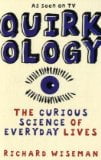 Quirkology: The Curious Science of Everyday Lives
Quirkology: The Curious Science of Everyday Lives
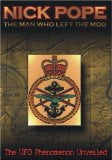
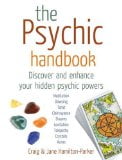 The Psychic Handbook: Discover and Enhance Your Hidden Psychic Powers
The Psychic Handbook: Discover and Enhance Your Hidden Psychic Powers